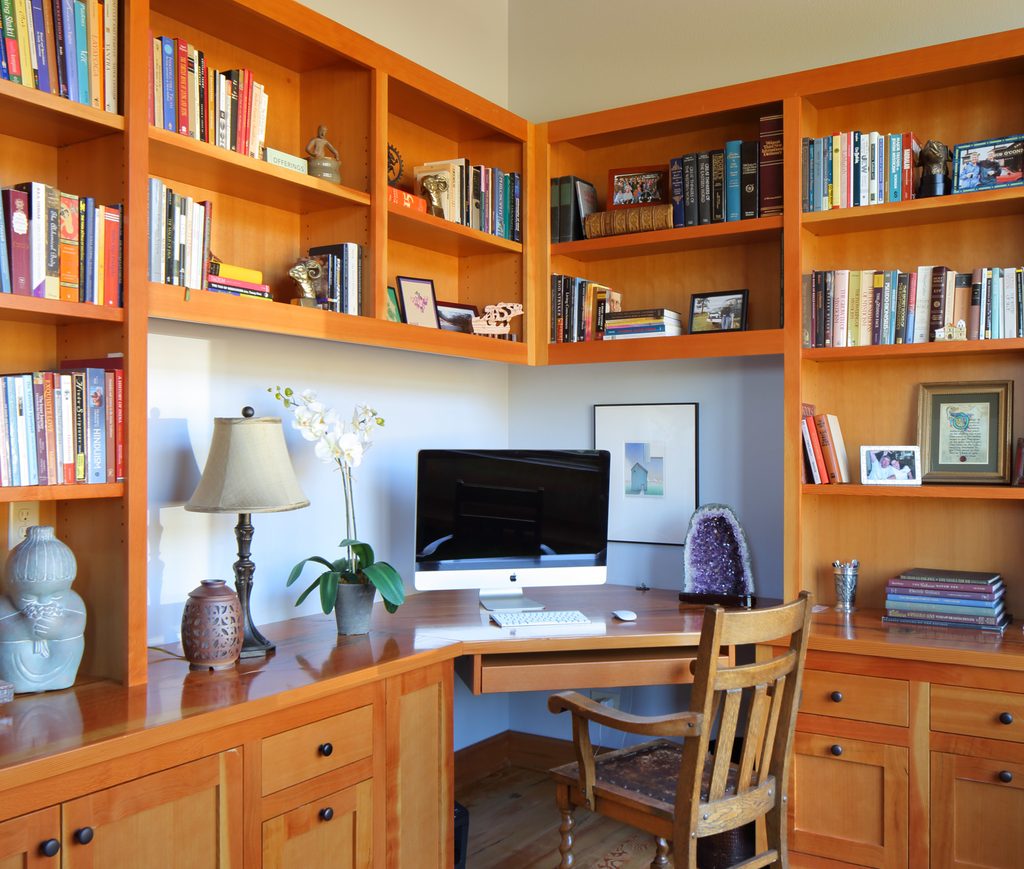Our home is our most treasured environment for shelter and sanctuary. Whether it’s owned, rented, on four wheels, or can be rolled up and carried on our back, our home is where we go to protect ourselves from outside forces. Home is where we nurture that which we deem of value: our loved ones, food, and possessions. For most of us, it’s also where we draw the line to separate what belongs to us from that which is shared with others.
COVID-19 is disrupting our public and private behaviors. As we continue to learn more about how we can reduce our exposure and limit our own bodies from becoming carriers of COVID-19 to others, the role of our home in our daily life is changing. The implications may have a lasting impact on how we, the community of architects and interior designers, configure current homes, and the design of new ones for our clients.
Storage: Or, the need to find room for all of that toilet paper. More than just the TP, it’s the bottled water, cans of food, boxes of throat lozenges, Go-Bags, etc. We are being advised to keep a minimum of two weeks’ worth of all of our needs, per person, in our home; food, water, medicine. Our prepper clients, family, and friends already have this one covered. If you feel that you’re running out of storage space, consider the upper levels of closets, under the stairs, the gap between the top of your kitchen cabinets and the ceiling, or keeping your car in the driveway and utilizing your garage.
Working from home: COVID-19 is impacting the need for home office space. A home office enables a place to provide our services, facilitate continuity to our flow of income, and shelter one another from the spread of this virus. Home office needs are unique from most of the other functions associated with our home. Bedrooms, whether spare or active, tend to double well as office space, in that they provide auditory and visual privacy from the rest of the home. The kitchen table may suffice for those who are not faced with the possible disruptions of workflow that may be triggered by family and friends. Technology is important to have up and running for robust and reliable internet access, the ability to access digital files on the server located at the office, and the likely need for video conferencing. Headphones are a must.
Those who are already set up for a home office understand the importance of a quiet place to work, a good ergonomic chair, setting digital timers for breaks, and the visual connection to nature. Almost all who are experienced with officing from home acknowledge the mental disciple required to fight off distractions by others and the lure of the procrastination monkey with little chores around the home and lure of the refrigerator. If you’re tight on space and have a garage, consider displacing the car temporarily and transforming it into your haven for work. Get creative; take over a tree house or tool shed if the weather, electricity, and internet are available. The use of a car for a home office is not out of question. Tents may work, for some.
Home as a classroom space: Many school districts have already closed and have shifted to distance learning. Home-schooling during periods of caution and quarantine will have an impact on both working and stay-at-home parents. Setting up classroom and study space is similar to arranging for a home office: creating a space that has a reduction in distractions, has good light and ventilation, ergonomic considerations for both the chairs and the desks, and access to robust technology. Cabinets (on wheels) and baskets will be needed, as well as a reasonable quantity of office, classroom and art supplies.
Home to multiple generations: “For decades we have been eating at smaller and smaller tables, with fewer and fewer kin. It’s time to bring back the big tables.” A recent article in The Atlantic questions the nuclear family model hailed as ideal in our culture, and there may be a growing trend in support of this assertion. Standard home designs reflect the smaller nuclear family, yet as we shift our paradigm, our living spaces will need to follow suit. Should you want to live with your adult children or move your parents out of their retirement home and into yours, does your current space allow for these adaptations?
In addition to the physical space of our homes, the emotional space occupied by those of us in them deserves additional consideration during unsettling events such as a pandemic. How we adapt to restricted circumstances can help mitigate the following:
Feelings of isolation. This can be an issue for most of us, whether you’re a social butterfly or an introvert. If you are accustomed to working outside your home and frequently socialize, the abrupt change as we engage in responsible social distancing can be problematic. For those who already work from home, even limiting or ceasing basic errands and excursions can create loneliness. We derive our sense of community in different ways, whether it’s just being out and about, working outside the home, volunteering, or social activities. When these daily habits are interrupted and limited (or temporarily curtailed), the resulting emotions can be problematic. Make a plan to connect to the outside world through social media, FaceTime, Skype, texting and calling.
Stress. Managing stress is always important and can become critical during trying times. Playing music, enjoying the views from your home or property, going on a walk, meditating, reading a book, or laughing – all of these are ways to calm the mind and body and shore up against the stress of the unknown. Does your living space have a quiet area for self-reflection? A spot to enjoy the view or soak in a patch of sun?
As we move forward and adapt to new realities – both temporary and permanent – it becomes vital to consider the implications for the designs of new homes. Our new normal might reflect the bigger picture of the world around us as we strive for strengthened sanctuaries in our personal living space.

